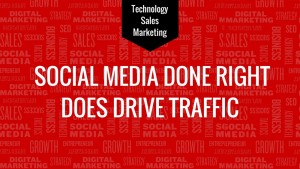They’re especially growing weary of ads in digital video, says a new IAB report.
In a new report, “Outlook 2022: The US Digital Advertising Ecosystem,” the IAB spells out bluntly the changes in consumer expectations of advertising. As for traditional advertising, they are tired of it and especially when it manifests as interruptions to digital video consumption. Lower consumer tolerance and higher expectations of brands are impacting “the composition and size of audiences for ad-supported media and entertainment brands.”
With the greatly increased availability of ad-free and ad-light entertainment sources, such as subscription streaming channels, inaction will have grave consequences. The IAB suggests: “Make advertising a better part of the broader media experience: more flexible, iterative, agile and an ‘always-on’ part of how companies consider and engage with consumers for a more holistic and value-driven experience.”
In particular, pay attention to consumer demand for a value exchange within the ad context. Said IAB CEO David Cohen in a release: “They want us to re-focus on their needs, reimagine ad formats, and reinvent what advertising can be. The next creative revolution needs to be about utility, not just cleverness.”
DEI is another key to success. Consumer values should be reflected in brand values. Despite the current scramble to acquire and retain top talent, diversity, equity and inclusion must remain a focus within the advertising industry. According to the report, “The pandemic, combined with calls for social and racial justice within the US, have influenced the way employees perceive and gauge value from their current and potential employers. ‘The Great Resignation’ illustrates the aggressive search and demand for reimagined employment opportunities that can meet elevated expectations for diversity, equity and inclusion practices.”
Failure or even just slownness to promote DEI within organizations will result in talent being driven to competitors.
A pincer movement by government and walled gardens. The advertising industry is likely to face future challenges from at least two directions. One is the prospect of government and regulators further constraining the ability of the industry to serve relevant advertising to known audiences, all in the cause of consumer privacy. The second is the unknowability of what the walled gardens (or would-be walled gardens) will do next.
“Without the development of alternative, consumer-safe solutions for delivering personalized ad experiences, economic and operational disruption is on the horizon,” concludes the report. The report can be downloaded, without registration, here.
Why we care. Are we living in the sunset days of traditional advertising? It’s too soon to make that claim, especially as many of us are increasingly surrounded by connected OOH billboards and besieged by unskippable ads during videos. It’s not all gloom when streaming TV provides an attractive way of targeting households through voluntarily submitted first-party data (not a cookie in sight).
But at the same time it’s becoming ever clearer that consumers are looking for a value exchange. They’re looking for information or content or just entertainment directed at their own personal needs of the moment. There are mechanisms for delivering that; forcing the audience to sit through ads they don’t care about isn’t one of them.
The post Consumer tolerance for traditional advertising continues to fall appeared first on MarTech.
MarTech(16)
Report Post






